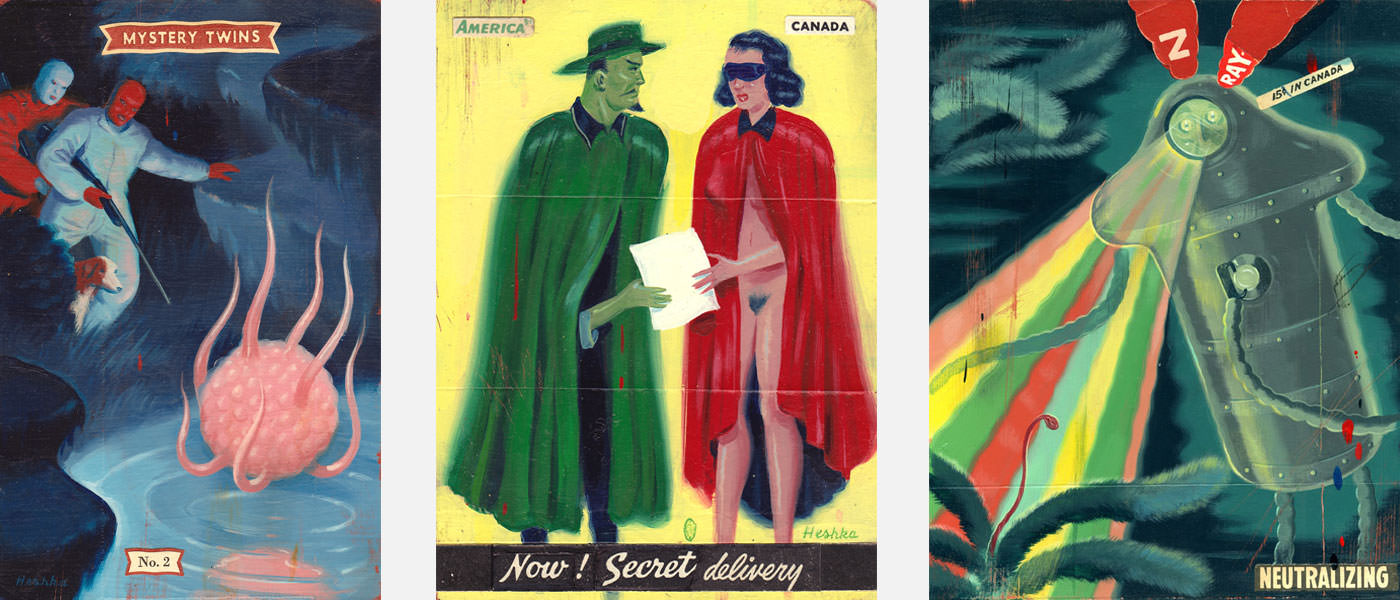

Mystery Twins, Now! Secret Delivery, Z-Ray
Currently, I am obsessed with the idea of obsession.
I’ve always been a visually obsessive person. From early childhood, I tended to grab onto a visual theme, became fixated on it, and recreated the theme in crayon, colored pencil, cardboard or even Super 8 movies until the subject was exhausted. Long harsh prairie winters gave me an excuse to stay in and crank out piles of doodles, filling scrapbooks with pages of fish, then pages of maps, then Batman, then round-cornered TV screens with the game graphics of Pong rendered in felt marker, and on and on. Later it was comic book characters, which turned into an obsession with making comic books. You get the idea.
At some point, this need to reinterpret and reinvent my visual obsessions gave way to jobs, school, and practical pursuits. But thankfully, it found me again years later when I was ready for it, and had experienced the world beyond comics and 8-bit video games. Along the way I had picked up an appreciation for architecture (I’m a rabid Art Deco fan), graphic and industrial design (why wasn’t I born as Raymond Lowey?), cinema (David Lynch in particular) and my musical tastes broadened (if Fats Waller had been alive, I would have stalked him). Along with the obsessiveness, that childhood world of costumed heroes, rubber monsters, giant insects and weird landscapes also reattached itself to my psyche; more likely, it had never really left, it just re-emerged with a vengeance.
That childhood world of costumed heroes, rubber monsters, giant insects and weird landscapes also reattached itself to my psyche; more likely, it had never really left, it just re-emerged with a vengeance.
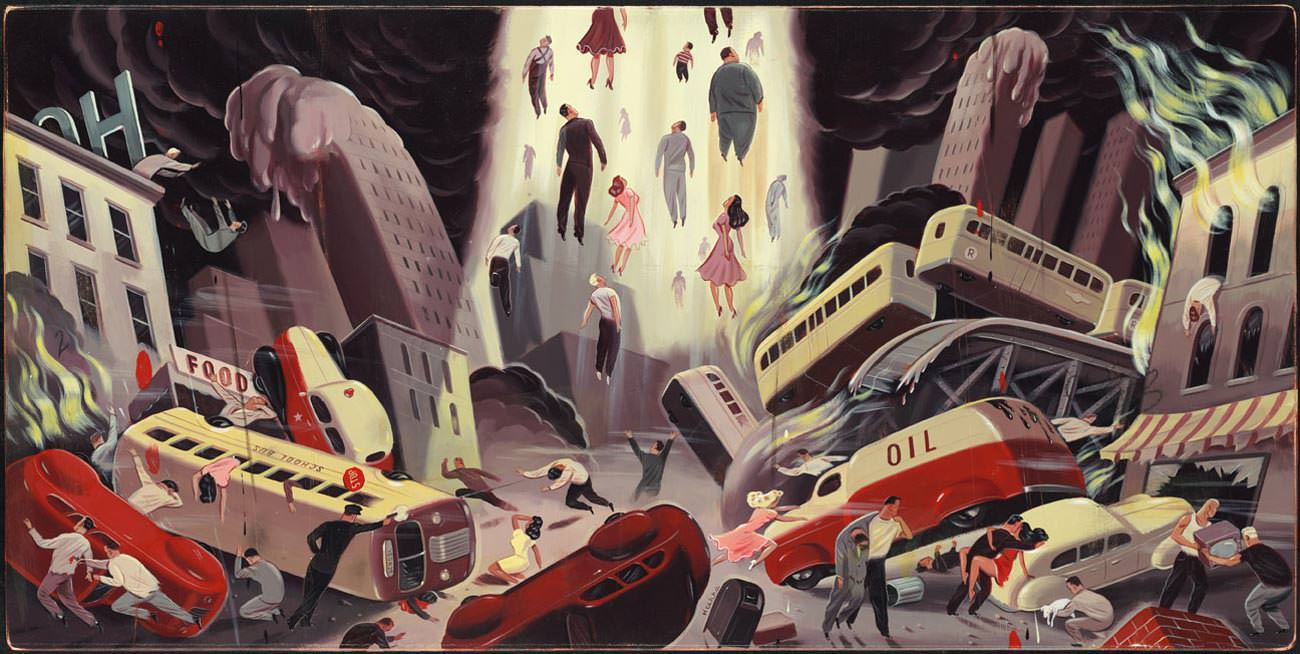

Rapture
This time, I did not beat those monsters back into my cranial recesses. I did not heed the grown up little man in my head and chug along to the practicality of a 9-to-5 workday. Instead, I ran with what had intrigued me as a child. Not only the obsession with the same imagery that had mesmerized me as a kid, but that feeling of being lost in a world of my own creation, and bringing artifacts back from that journey in the form of drawings and paintings.
Knowledge of art and design basics in image-making is invaluable. Composition, color theory, technical skills, and anatomy are all tools I use every day. But being awakened to how my obsessions have shaped my art, and the depth to which those obsessions help me enter my art, is something that I couldn’t have been taught. I had to come to realize its value myself. Now that I am aware of it, I apply that skill of obsession (yes, I consider obsession a part of my skillsets) to those art basics to strengthen those individual facets, as well as personalize and enrich my visual vocabulary.
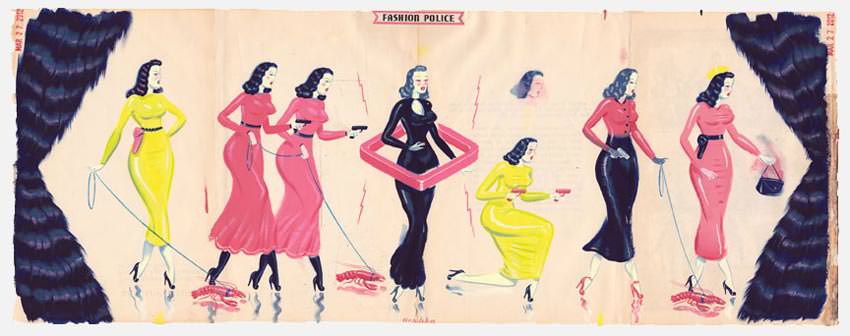

Fashion Police
Being awakened to how my obsessions have shaped my art, and the depth to which those obsessions help me enter my art, is something that I couldn’t have been taught.
I’m not blazing any new trails by discussing obsession in art. Very obsessive individuals produce some of the most honest art. One example being Henry Darger: fantastic, but honest art in its own right. The discovery that I have always used obsession in my work is a new concept for me, and the way I think about applying it provides freshness to my process. I had always overlooked that simple, age-old concept of obsession as a way to breathe life into art- to enter your art, to live in it, to “get in the zone.” The repetitive nature of obsessing has become a sort of art-inducing trance for me on a subconscious level, an ever-changing visual mantra.
Some days it is easier to enter this spiral staircase of obsession, other days it becomes more difficult. Sharpening the use of my obsession is an ongoing mental exercise, to be able to enter and exit it at will, to call on it and draw from it. The promise of discovery each day often awakens that little kid who used to draw Batman until the markers ran dry. That child isn’t present every day, but when he is, we get together and make art, and time stands still.
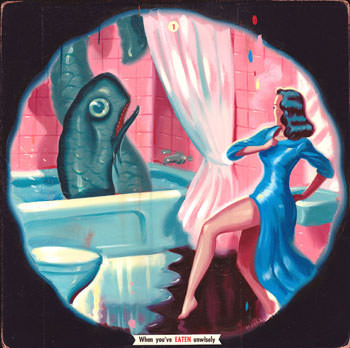

When You’ve Eaten Unwisely


Doctor Stories
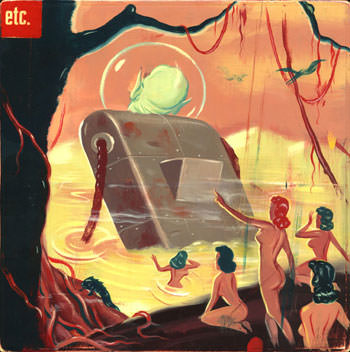

Etc.
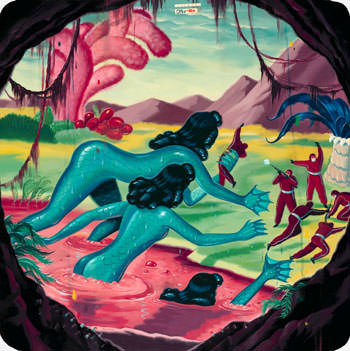

The Six
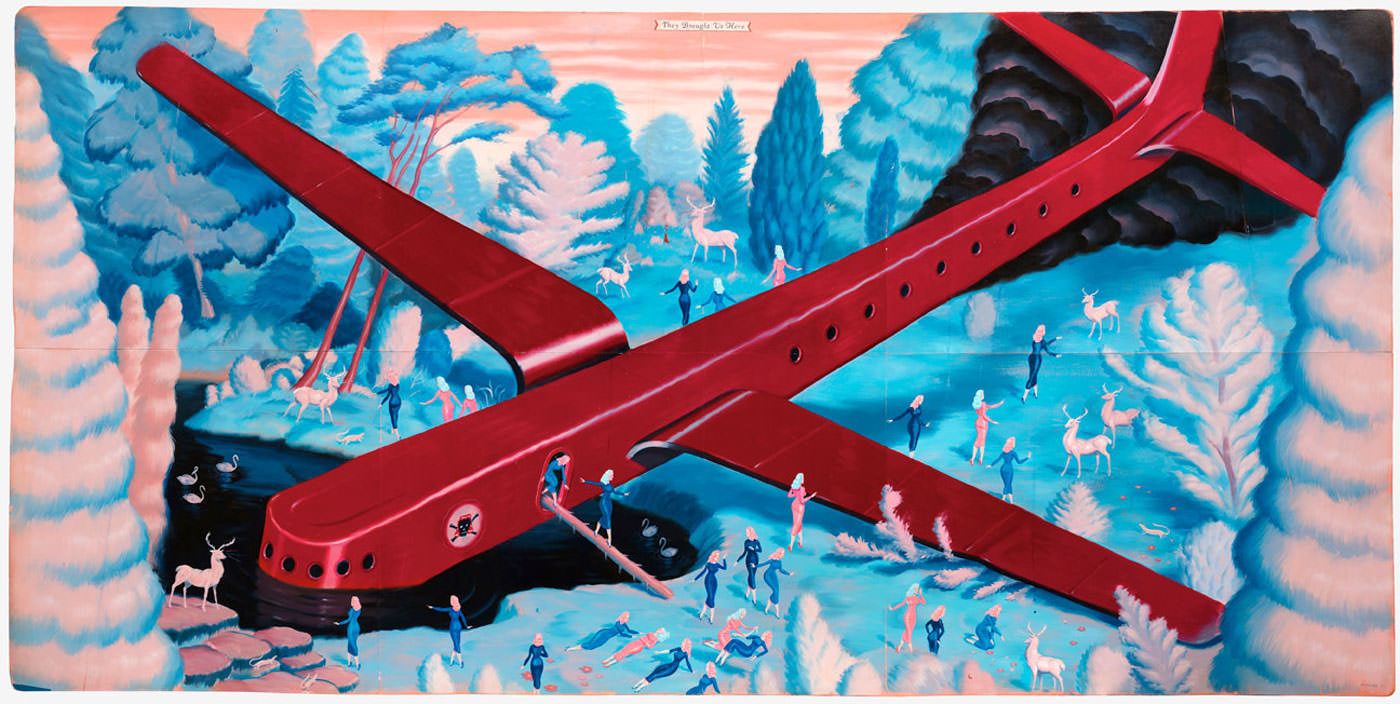

They Brought Us Here